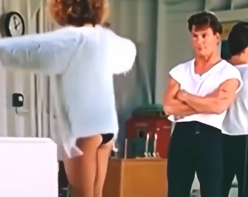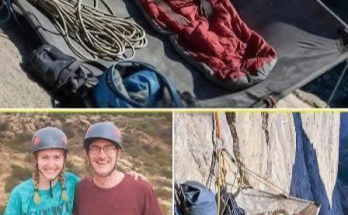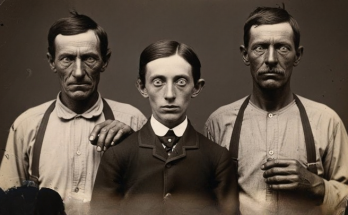There are films that fade with the decades, remembered only by a small group of dedicated fans, and then there are films that transcend their release date, continuing to inspire audiences long after the credits first rolled. Dirty Dancing, released in 1987, falls firmly into the second category. It is one of those rare cinematic experiences that manages to be both a reflection of its era and a universal story that still resonates today.
More than thirty years later, viewers still find themselves immersed in the romance, the music, and the energy that pulses through every scene. It is quoted endlessly, replayed across generations, and remains one of the most beloved love stories in film history. Yet, even for those who have watched it countless times, the story of Dirty Dancing keeps evolving. Recently, long-lost deleted scenes have surfaced online, giving fans new treasures to enjoy and confirming what many always believed: this film was lightning captured in a bottle.
Rediscovering Hidden Treasures
One of the most talked-about rediscoveries came in the form of a rehearsal clip shared on YouTube by creator Jamie Jones. The footage, which quickly spread among fans, showcased a tender moment between Patrick Swayze and Jennifer Grey as they practiced a dance intended for the film’s Shelldrake performance sequence.
What surprised many was the fact that this moment never appeared in the finished movie. For years, fans assumed they remembered it from the final cut, but in reality, it had been left on the editing room floor. According to the uploader, the scene was cut to make way for the now-iconic “Love Is Strange” sequence.
What makes the rehearsal clip so extraordinary is its authenticity. Patrick and Jennifer reportedly believed they were simply running through the steps, not being filmed for posterity. What audiences see is raw and unscripted—Patrick’s natural authority as a trained dancer blending beautifully with Jennifer’s vulnerability and playfulness. Together, they radiated the same chemistry that made Johnny and Baby unforgettable cultural icons.
Fans React to the Rediscovery
The comments beneath the clip were filled with admiration. Viewers marveled at Patrick’s effortless movement, noting how his years of training were visible in every gesture. Jennifer’s unguarded charm, enhanced by her simple cardigan and candid expressions, created a sense of innocence that made their partnership believable.
Some fans also reflected on how the real-life tension between the two actors may have fueled their performances. Their off-screen dynamic, sometimes challenging, seemed to transform into a kind of electricity on screen. As one admirer wrote, “Watching Patrick Swayze dance is pure delight—he moved with such grace that you couldn’t take your eyes off him.”
Patrick Swayze: A Life Shaped by Dance
Patrick Swayze’s devotion to dance was not something he discovered later in life—it was a part of him from childhood. Growing up in Houston, Texas, he spent much of his time in his mother’s dance studio, where he learned discipline, poise, and an artistry that would later set him apart in Hollywood.
Unlike many leading men of the era, Patrick did not simply act the part of a dancer—he truly embodied it. His physicality, refined through years of ballet and choreography, gave him a natural fluency in the language of movement. Every glide across the floor, every effortless lift, and even the way he leaned casually against a wall radiated authenticity. Fans watching Dirty Dancing were not just seeing an actor; they were witnessing a trained dancer whose body told stories as eloquently as words ever could.
Jennifer Grey: From Innocence to Confidence
Equally important to the film’s magic was Jennifer Grey’s heartfelt performance. Her portrayal of Frances “Baby” Houseman resonated with audiences because it felt genuine. Baby’s journey from uncertainty to confidence mirrored the emotions many viewers recognized in themselves.
Jennifer has often shared behind-the-scenes stories that reveal just how real those moments were. For instance, she confessed that she had been too nervous to rehearse the climactic lift. What audiences see in the final scene is, in fact, her first attempt. That vulnerability—the look of fear and exhilaration as Patrick raised her above the crowd—was completely authentic. Years later, she admitted, “I’ve never done it again. I don’t know how anyone has the courage to try it without Patrick.”
This unplanned authenticity gave the movie an emotional depth that cannot be manufactured. Choreographer Kenny Ortega later remarked that the combustible dynamic between Patrick and Jennifer fueled the realism of their dance scenes. He described them as “human fireworks,” an apt phrase that perfectly captured the essence of their chemistry.
More Than Just a Romance
While the rediscovered deleted scenes are thrilling for fans, they also serve as a reminder of what made Dirty Dancing so enduring. The film was never simply about choreography or a catchy soundtrack—though both elements were undeniably important. At its core, it was a story about growth, discovery, and courage.
Johnny Castle, portrayed by Patrick Swayze, is a man struggling against a society that reduces him to a commodity, valued only for his physical talent. Baby, played by Jennifer Grey, is a young woman navigating the expectations of a world that wants her to stay within clearly defined boundaries. Their journey together is about breaking free—about finding joy, identity, and the courage to step into the unknown.
Patrick himself once explained, “It’s about people finding themselves. Johnny feels like a product, and Baby is trying to figure out who she is in a restrictive society.” These words highlight why the film remains relevant even decades later. Its themes are universal, speaking to anyone who has ever felt confined by circumstances or struggled to embrace their true self.
Cultural Impact That Endures
The rediscovered scenes don’t change the story, but they enrich it. They give fans a deeper appreciation for the layers of humanity woven into the film: the playful rehearsals, the nervous laughter, the unspoken trust between two performers who, despite their differences, created cinematic magic.
Today, more than three decades after its release, Dirty Dancing is not just remembered as a romantic classic. It has become a cultural touchstone. Its soundtrack remains one of the best-selling of all time, its dialogue is endlessly quoted, and its final dance sequence is frequently referenced in popular culture.
From television homages to stage adaptations, the story continues to be reimagined for new audiences. Yet no matter how many times it is retold, nothing compares to the raw authenticity of the original film.
A Legacy of Inspiration
As we revisit Dirty Dancing with these rediscovered treasures, we are reminded of the extraordinary legacy Patrick Swayze left behind. His charisma, grace, and dedication to his craft are still celebrated decades after his passing. Jennifer Grey’s performance remains equally powerful, capturing the transformative journey from innocence to self-assurance.
Together, they created a story that continues to inspire. The deleted scenes serve as a reminder that even moments left unseen can hold the same electricity as the finished film. For fans, they are not just outtakes—they are pieces of history that deepen the appreciation of an already beloved story.
Why Dirty Dancing Still Matters
In the end, Dirty Dancing endures because it speaks to something timeless: the power of love, the importance of courage, and the willingness to take a leap of faith even when fear is present. Every rewatch, every rediscovery, and every conversation about the film keeps its spirit alive.
For longtime admirers, it is a cherished memory that grows richer with time. For new viewers, it is a story waiting to be discovered, as fresh and inspiring now as it was in 1987. The final lift remains one of cinema’s most unforgettable moments, not only because of its visual grandeur but because of the vulnerability and trust it represents.
More than three decades later, Dirty Dancing is not just a nostalgic relic—it is a living memory, renewed with each viewing. Whether experienced through the original film, stage adaptations, or newly surfaced deleted scenes, it continues to remind us of the beauty found in risk, the joy in discovery, and the timeless magic of dancing when no one is watching—except, of course, the millions who still believe in its story.



